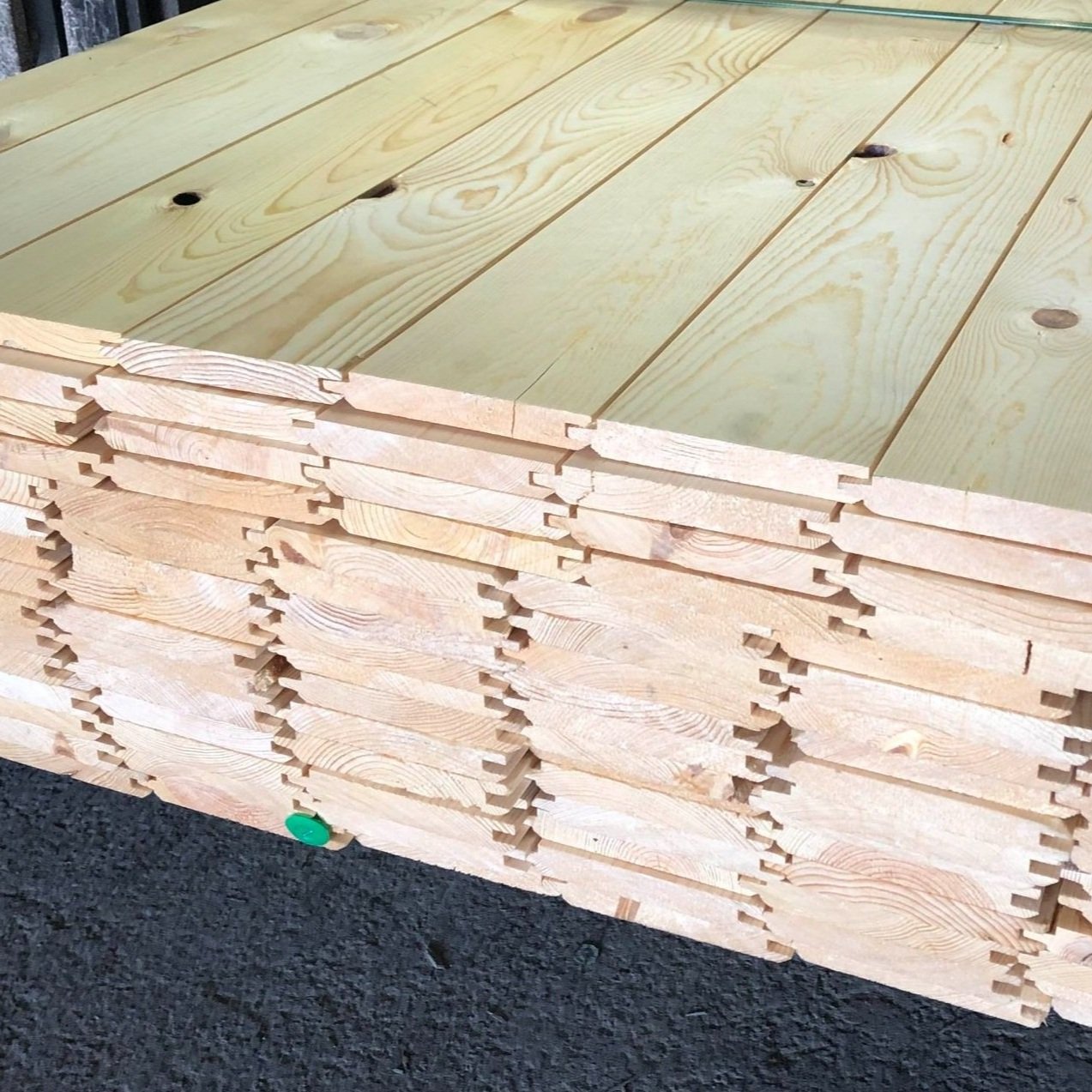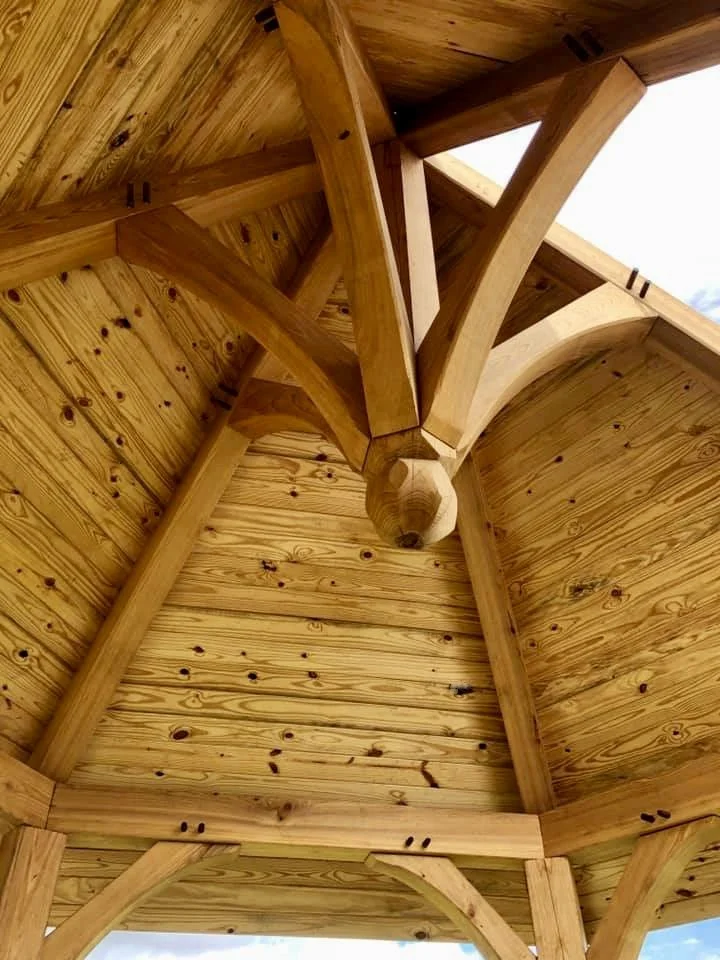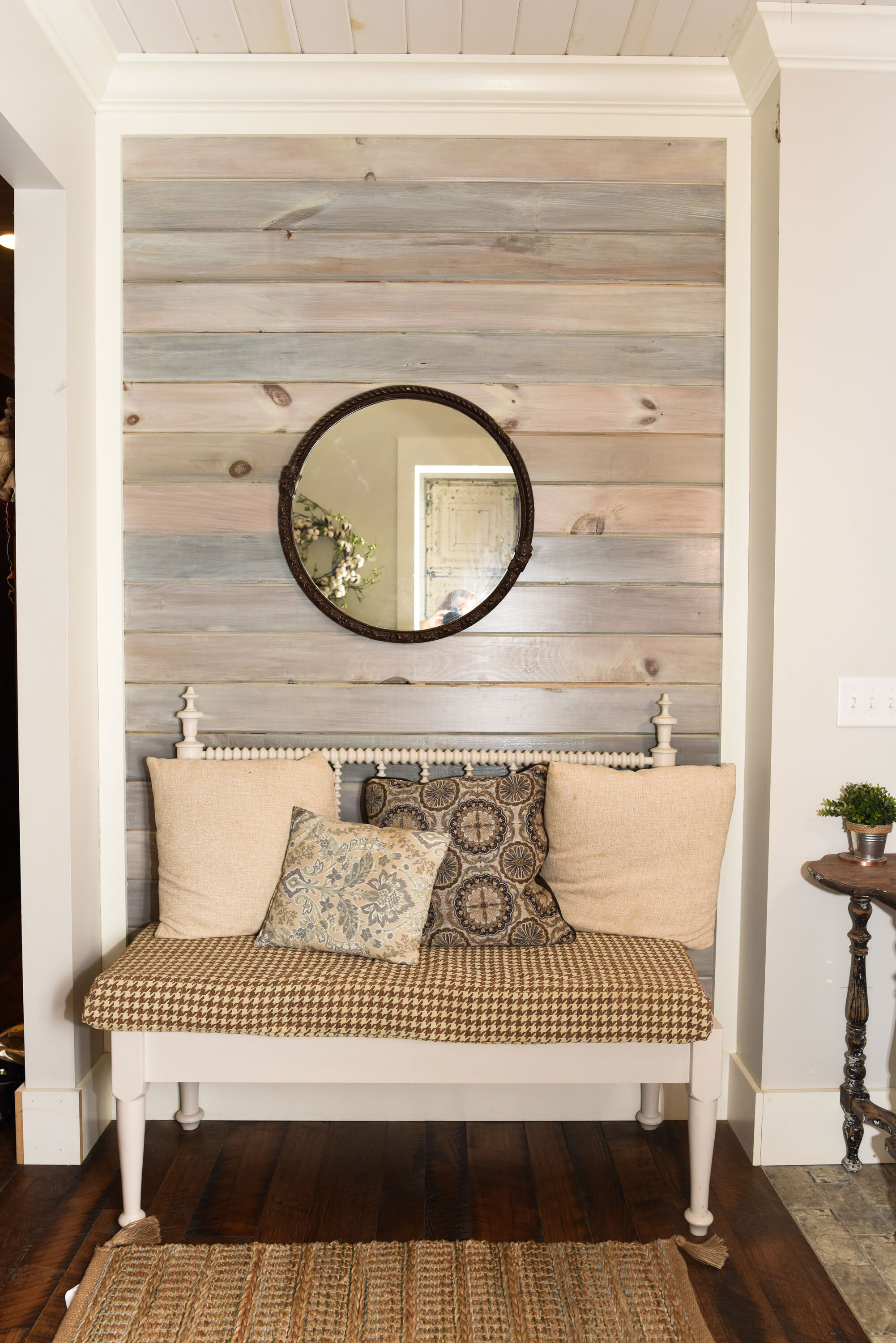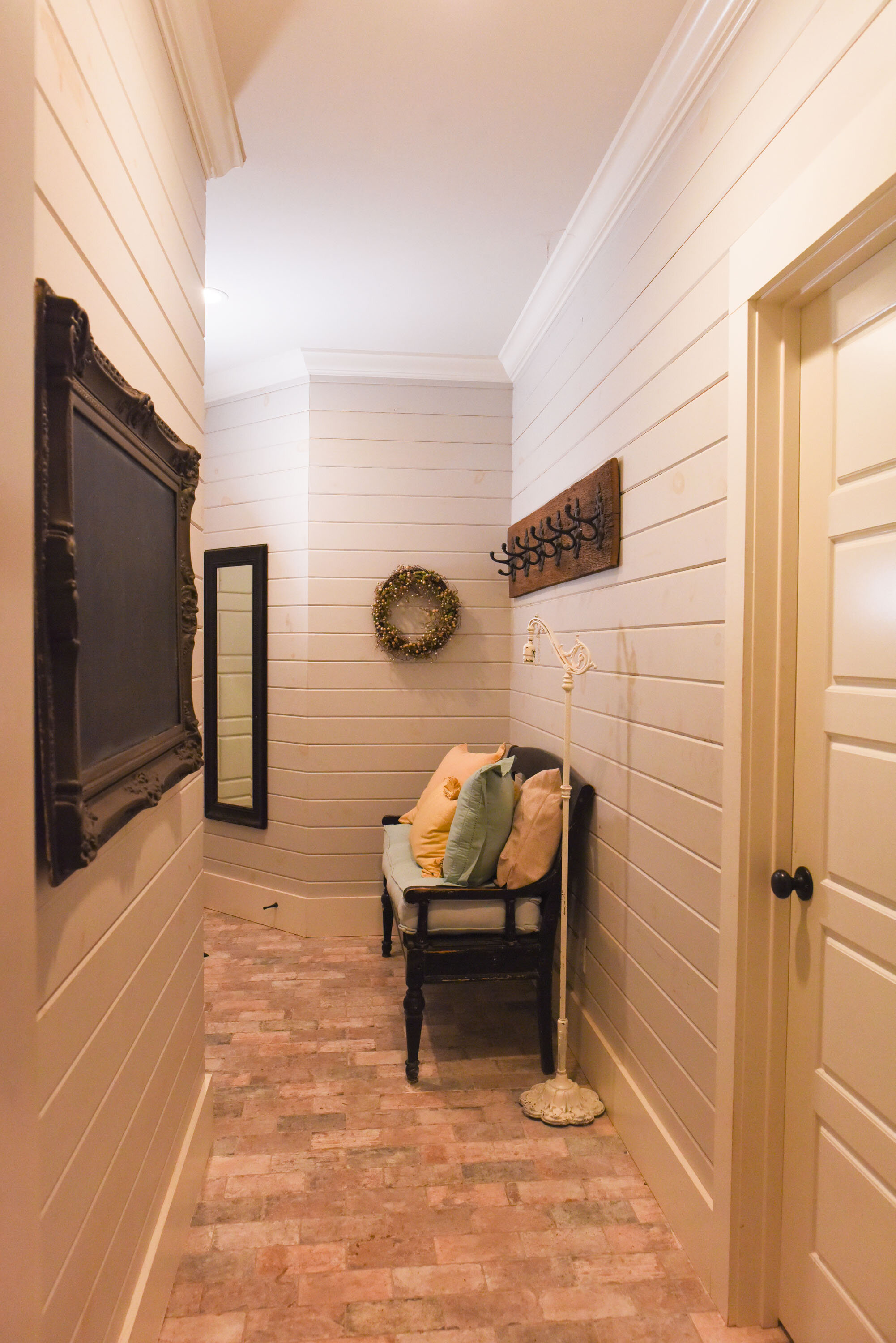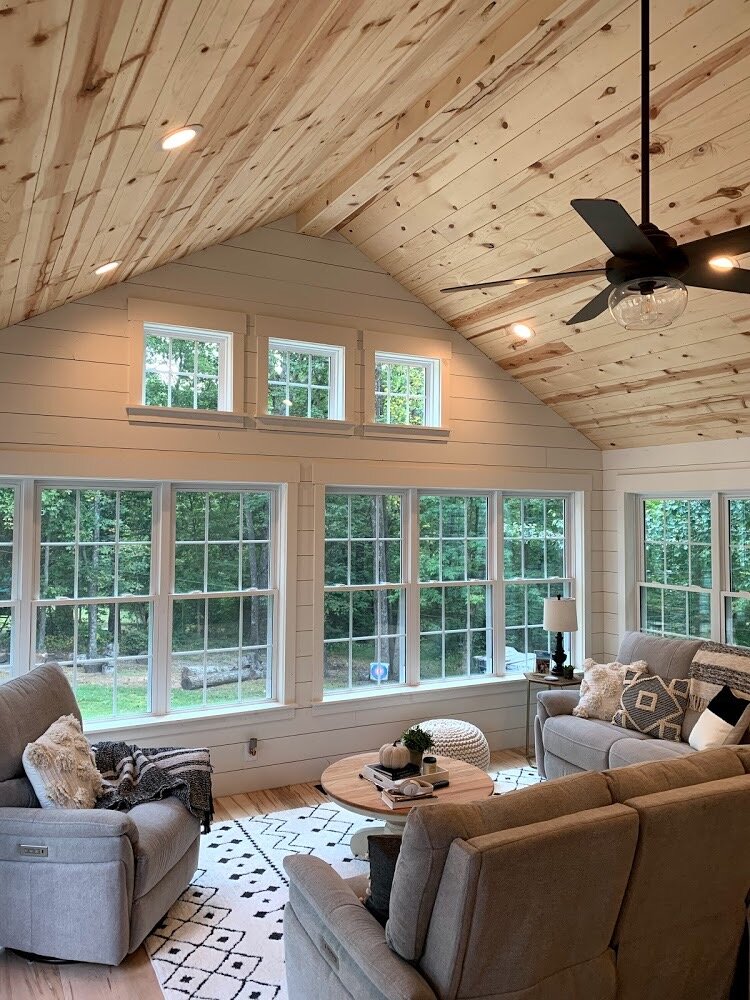Locked in style for endless designs and applications.
When you’re looking for the timeless beauty of wood walls and ceilings, wood with character is hard to beat. Every board’s uncommon potential brings life to your home. Whether installing on your walls or ceilings, you’re covering your living spaces with the character-filled beauty of real wood.
We supply our kiln-dried tongue and groove wood in long lengths. We maintain a healthy stock of flooring, v-groove (car siding), and bead board patterns. Looking for more options? Have questions availability, pricing and more? Give us a holler. Our team is always ready to help.
What are Tongue and Groove Boards?
T&G boards are milled with a protruding tongue on one edge of the board and a receiving groove on the opposite edge. These lock together on consecutive boards, creating a very tight, stable joint that can be milled with a wide array of patterns on the face to provide the perfect look for your project.
Tongue and groove has been regularly used in homes since the end of the 19th century, and continues to prove an excellent option for finishing your walls, ceilings, floors, and more.
We supply our kiln-dried tongue and groove wood in multiple patterns, including v-groove, bead board, and square edge all milled with the tongue and groove joint. Tongue and groove is also a great option for flooring and you can find the T&G flooring section here.
Tongue and Groove Wood Patterns:
V-Groove
The V-groove pattern with tongue and groove is a very popular option. When these boards are milled there is a 1/2 "V" cut into the edge of the joint. When two boards are connected the two halve "V"s form an actual V-shaped groove down the length of the board. Sometimes this is referred to as car siding, based on the historical installation of v-groove boards in old railroad cars. This pattern is illustrated in the picture below.
Bead Board
Is also a popular tongue and groove pattern. The beadboard pattern is created by cutting a recess and bead down the edge of the tongue and groove board. When the boards line up together they create the beaded effect down the edge. There is also a bead that runs down the middle of the board that adds more texture to the board. This is all illustrated in the picture below.
Square edge
A square edge on the tongue and groove gives it a shiplap look. Instead of a bead or a v being cut down the side of the board it is simply left square creating a flat surface when fitted together edge to edge.
Pine
The Run of the Mill Grade- Our pine tongue and groove comes in what we call our popular Run of the the Mill grade at widths of 6" and 8" and is our most popular item available. We also carry it in 1x10 and 1x12. The Run of the Mill shiplap is available in eastern white pine and ponderosa pine. This option has plenty of character and knots in it, but it also has more missing knots, cracks, and things that amount to waste - depending on how you view it.
The Benchmark Grade- We also carry what we call our Benchmark lumber. This Eastern White Pine is a much cleaner offering than our Run of the Mill and offers customers a beautiful product with less waste. The boards are custom milled to the pattern of your choosing.
Patterns- This wood can be run with a v-groove, bead board, or square edge pattern to give you lots of options.
Poplar
The Run of the Mill Grade- We carry our Run of the Mill poplar in 2 widths; 6” and 8". Our Run of the Mill is a our more popular grade lumber and has a ton of character, but it also is our lower grade option in poplar tongue and groove. You will still see some cracks and barky edges, but there will be significantly less waste in poplar than you might find in other types of wood. It's loaded with so much character that lots of people who are planning to paint actually change their minds once they see how it looks natural. BUT if you want to paint, poplar is a great option as a species.
The Benchmark Grade- We also carry what we call our Benchmark lumber. This Poplar is a much cleaner offering than our Run of the Mill and offers customers a beautiful product with less waste. The boards are custom milled to the pattern of your choosing.
Patterns- This wood can be run with a v-groove, beadboard, or square edge pattern to give you lots of options.
Eastern Cedar
The Benchmark- Our eastern red cedar option has been growing increasingly popular recently. Like the poplar, the cedar tongue and groove boards come in our Benchmark Grade lumber. You can get this option in a 6" and 8" width.
Patterns- This wood is typically run with a v-groove on one side of the boards and a square edge on the reverse side, but it can also be run to a bead board pattern. This gives you lots of options.
Cypress
The Benchmark- Our cypress option has been requested for a long time and now we have it. Known for it’s rot resistance and beautiful grain, this wood will be full of character and make for a beautiful finish. Like the cedar, the cypress tongue and groove boards come in our Benchmark Grade lumber. You can get this option perdominantly in a 6", but at times in an 8" width.
Patterns- This wood is typically run with a v-groove on one side of the boards and a square edge on the reverse side, but it can also be run to a bead board pattern. This gives you lots of options.
Blue Stain
The Benchmark- Our blue stain ponderosa pine comes in 6" widths. This option comes in our Benchmark Grade. Everything is milled to a v-groove at the joint only on one side and a flat-back on the reverse side. The blue stain is a very popular option for walls, floors, and ceilings. The blueing in the wood is created by a fungus carried by beetles that infects and kills the trees. The shades of blue vary from tree to tree and offer a ton a character to walls, floors, and ceilings.
Patterns- This wood is typically run with a v-groove on one side of the boards and a square edge on the reverse side, but it can also be run to a bead board pattern. This gives you lots of options.
Rainbow Poplar
The Benchmark Grade- We carry our mineral stained rainbow poplar, also called rainbow poplar, in a 1x4, 1x6, and 1x8. This Poplar is a much offers customers a beautiful product with less waste, but full of rich colors and character. The boards can be custom milled to the pattern of your choosing, but are typically run with a V-Groove at the joint on one side and are graded to that side of the board. The reverse side is square edge.
Patterns- This wood can be run with a v-groove, beadboard, or square edge pattern to give you lots of options.
2x6 Tongue & Groove
The Benchmark- Our 2x6 tongue and groove comes in our southern yellow pine. This option comes in our Benchmark Grade. Everything is milled with a v-groove at the joint only on one side and a flat-back on the reverse side. We often keep this option in stock, but can have our mill run it quickly when we run out of inventory.
Patterns- This wood is typically is milled with a v-groove at the joint only on one side and a flat-back on the reverse side.
WHAT TO EXPECT:
The lengths in packs will vary, but the most important thing to consider is that we try to discourage customers from expecting they’ll always be able to use full length boards. When you account for cracks, missing knots, and other board waste, you should expect butt-joints. Simply put, this is part of using lower grades of lumber. If you look at most every picture of our customers’ homes, you will see those character-filled boards and maybe even some missing knots installed in their homes.
MORE INFO?
Need more information about what’s available, how to plan your project, what to expect, or are ready to order? Send our lumber specialists a message below or give them a call directly. We’re excited to help you!






